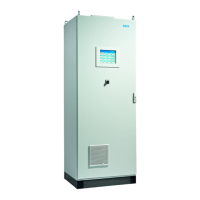
Do you have a question about the SICK MCS100FT and is the answer not in the manual?
| Enclosure rating | IP65 |
|---|---|
| Measurement components | O2 |
| Gas pressure | Yes |
| Power supply | 24 V DC |
| Communication interfaces | Ethernet |
| Measurement range | Depends on gas component |
| Operating temperature | -20°C to 50°C |
| Interface | Ethernet |
| Housing material | Stainless steel |
| Storage temperature | -20 °C ... +60 °C |
Overview of important safety information, including general hazards and specific warnings.
Guidelines for correct and safe operation of the device as per manual.
Defines the purpose of the MCS100FT as an emission measuring system.
Highlights the key features and capabilities of the MCS100FT analyzer.
Explains the extractive measurement method and internal functional units.
Describes the independent operation of the MCS100FT, including status signals and malfunctions.
Covers site preparation, ambient conditions, and installation location requirements.
Specific requirements for preparing the installation site, including ambient conditions and air outlet.
Guidance on preparing gas connections, including hazards and specific FID-100FT notes.
Instructions for preparing electrical connections, emphasizing safety and professional installation.
Details on connecting and configuring the Ethernet interface, including IP address settings.
Step-by-step guide for powering on the MCS100FT and observing initial boot-up.
How to confirm the system is operating correctly after startup.
Essential checks and safety warnings before powering on the MCS100FT.
Detailed steps for switching on the device and observing system status indicators.
Overview of how to operate the MCS100FT system.
Details on using the touchscreen operator panel for device interaction.
Guides access to the MCS100FT analyzer menus for various functions.
Guides the selection and start of adjustment procedures for the MCS100FT.
Starts automatic check and adjustment processes for MCS100FT components.
Manual adjustment procedures for IR components, including zero and span adjustments.
Setting adjustment parameters specifically for the O2 sensor.
Configuration options for automated adjustment of IR components like zero, drift, and span.
Detailed steps for manually adjusting IR components, including zero and span calibration.
Setting parameters for O2 sensor adjustment, including span gas and time constants.
Setting parameters for the adjustment of IR components.
Detailed settings for IR component adjustment, like offset, samples, and tolerance.
Access to maintenance functions like operating mode switch and status reset.
Guides the selection and start of adjustment procedures for the FID-100FT.
Access to maintenance functions: ignition and mode switching.
Instructions for checking and adjusting the MCS100FT and FID-100FT using test gas.
Steps for switching off the MCS100FT for periods up to approximately 2 weeks.
Procedure for a full shutdown of the MCS100FT, to be performed by trained personnel.
Detailed steps for safely switching off the MCS100FT for short periods.
Step-by-step instructions for completely shutting down the MCS100FT.
Outlines the maintenance schedule and required works based on intervals.
Details the frequency (weekly, quarterly, etc.) for various maintenance tasks.
Provides detailed descriptions for visual checks and renewal of parts.
Instructions for checking the drying agent cartridge condition and replacing it when moist.
Step-by-step guide for replacing the drying agent cartridge in the interferometer.
Information on fuses in the system cabinet and their potential assignment.
Steps to diagnose and resolve issues when the FID-100FT fails to ignite.
Details on checking fuses in the system cabinet and their possible assignment.
Actions to take when the MCS100FT status field is red, indicating a malfunction.
Steps to resolve interruptions in the connection between the MCS100FT/FID-100FT and SCU.
Diagnosing why the FID does not ignite or burn, and potential causes like fuel gas supply.
Presents comprehensive technical data, including components, ranges, and operating conditions.
Lists measuring components, ranges, detection limits, and device features.
Details ambient conditions, power input, gas supply requirements, and piping specifications.